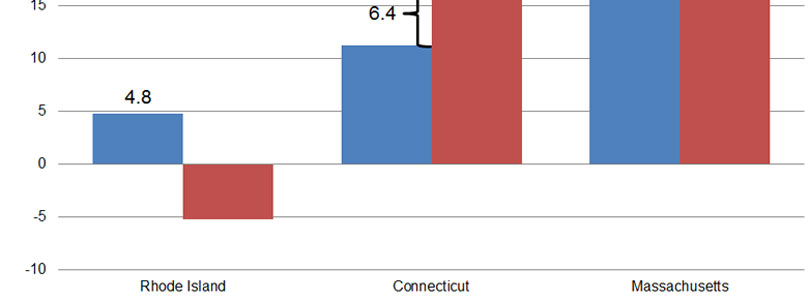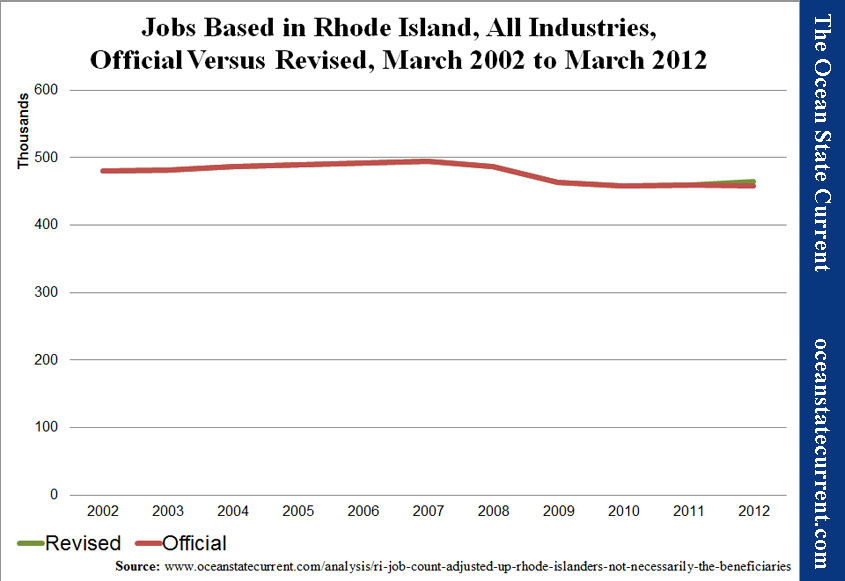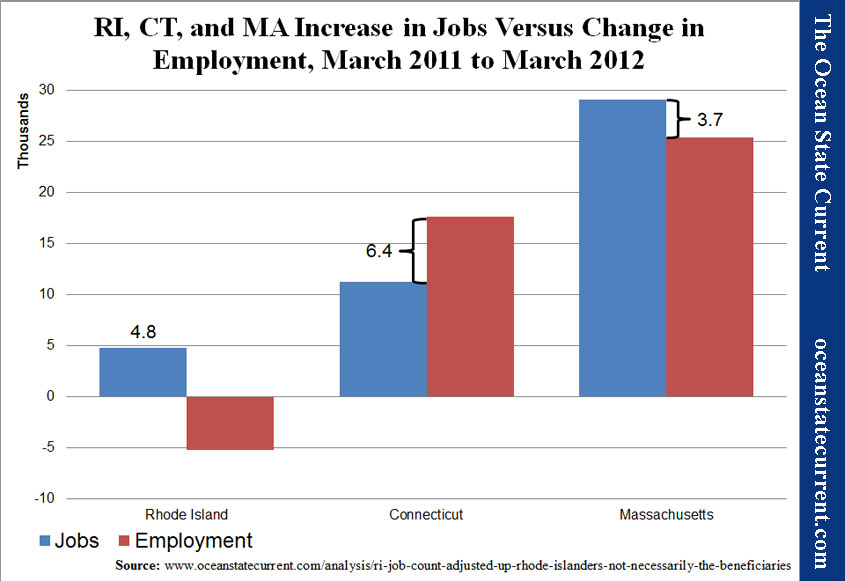RI Job Count Adjusted Up; Rhode Islanders Not Necessarily the Beneficiaries
After months of hearing from various sources, notably URI economist Len Lardaro, that official jobs reports for Rhode Island were inaccurately gloomy, I was thrilled, yesterday, to see Governor Chafee authorize the state Department of Labor and Training (DLT) to release new estimates.
Basically, there is a substantial lag before the federal Bureau of Labor Statistics (BLS) publishes official, verified data on the number of jobs there are originating in Rhode Island. Between publications, the BLS releases monthly estimates based on its models and smaller surveys, which it adjusts as needed when more concrete data becomes available. Using a more accurate data set, the DLT says that the jobs picture improved to 464,700 jobs in March, compared with the “official” 457,700 jobs, both measured against the March 2011 number of 459,900.
The official number shows a decrease, while the revised number shows an increase. The following chart puts the two numbers into graphical context.
It’s important to note that this is not the data used to calculate labor force, employment, and unemployment numbers for the state. The above data is employer-focused, based on tax filings and survey results from employers in Rhode Island with regard to the number of employees that they have. The unemployment rate and related data come from surveys of Rhode Islanders with regard to whether or not they are working.
According to that data, the number of employed people living in Rhode Island dropped from March 2011 to March 2012 by 5,258. It’s critical to repeat that we’re dealing with two data sets. That’s important, first, because the numbers will have different methodologies and different margins of error. More significantly, they measure different things: jobs in the state versus workers in the state.
But if we can count on the data to be at least somewhat accurate, it presents a peculiar picture that the number of jobs in the state increased by just under five thousand while the number of employed people in the state decreased by just over five thousand. To give a better sense of just how peculiar it is, the next chart shows the change in numbers from March 2011 to March 2012 for Rhode Island, Connecticut, and Massachusetts.
Again, assuming that both sets of data are reasonably accurate, Rhode Island is the only Southern New England state to increase jobs but lose employment. (Politically, it should be enough to note that it’s the only Southern New England state to lose employment!) Connecticut created 11,200 jobs, but its people found 17,600. In Massachusetts, the employers created 3,700 more jobs than its own population absorbed.
On a net basis, the Rhode Island private sector may be creating jobs, but it isn’t creating jobs for people who live in Rhode Island.
The variables of who takes what job from where are extremely personalized, and there is no data set of which I’m aware (outside of top-secret tax-department vaults) that would allow a thorough analysis. However, it’s reasonable to conclude that some of the RI jobs held by non-RI residents go to commuters just over the border, in keeping with the RI Center for Freedom & Prosperity’s findings with regard to taxpayer migration. Some of them, no doubt, are former Rhode Islanders who no longer count among our employment statistics because they moved.
A quick look at year-over-year employment changes in abutting counties in Massachusetts and Connecticut (May 2011 to May 2012) shows that employment increased by 10,879 in the counties surrounding Rhode Island across the border.
It would go too far to make precise assertions based on these dispersed numbers. However, Rhode Islanders should heed an obvious suggestion: It is a clear drag on any potential recovery for the Ocean State if the jobs that our fragile economy is creating send income across to neighboring states. The economies in those states are already healthier, nearly at their peak employment, without Rhode Island’s having to contribute to their improvement.





